Beasts of burden: 'If there’s no blood, how can it be afraid?' - The making and breaking of Thailand's elephants
In the second part of a series looking at Thailand's changing relationship with its elephants, CNA investigated how the animals are trained to perform unnatural acts in shows for tourists.
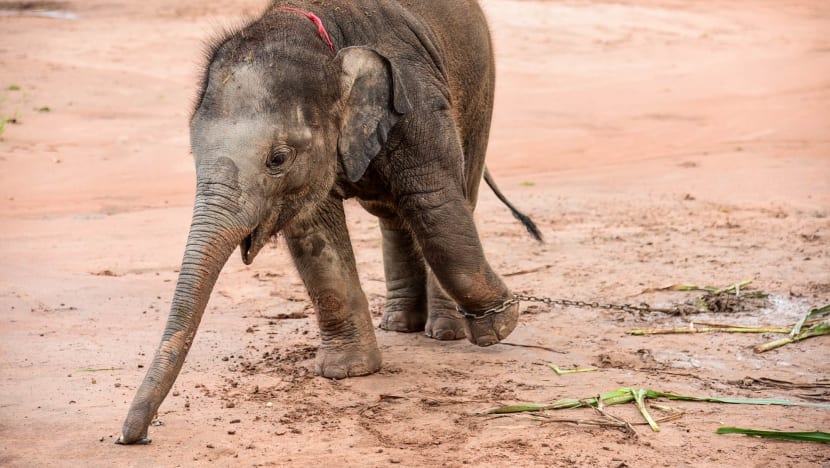
Elephants are isolated from their mothers at a young age to be controlled by humans more easily. (Photo: Pichayada Promchertchoo)
BANGKOK: Elephants are like dogs in Ban Ta Klang. They are everywhere, young and old, chained to trees and posts. Everyone seems to have at least one in their yard.
At dawn, in the growing light, locals tend to their animals, dragging out bunches of grass for them to eat. Some elephants are made to practice their training, or skills like painting on pieces of paper on easels, brushes gripped in their trunks. They are prized possessions - talented performers or youngsters in training, destined for a life entertaining tourists.
This is "Elephant Village". It is the epicentre of the domestic elephant industry in Thailand - a place that carries memories of a human-animal relationship that has evolved over generations.
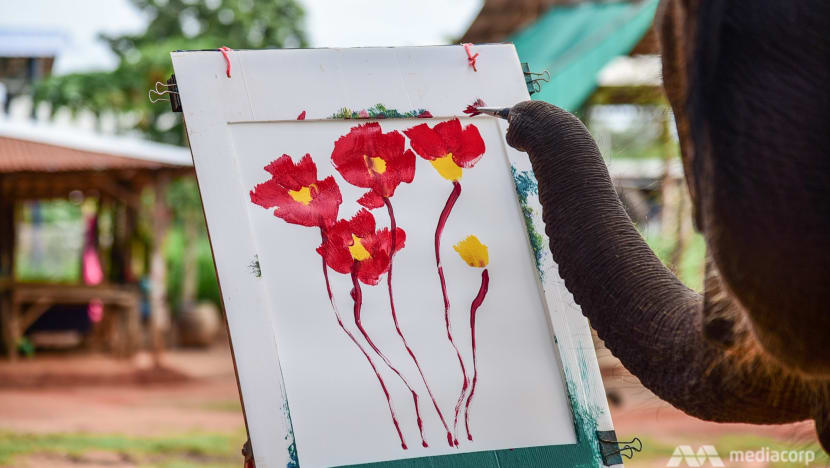
Thousands of Thai elephants have passed through the custody of the local Gui people in Surin province, some 450 kilometres east of Bangkok. There is a communal pride in the spiritual connection they boast of having with elephants.
“We and elephants rely on each other every day. They work and eat with us and come with us wherever we work. It has been like this since our great grandparents,” said Hern Jongjaingam, an 81-year-old elephant tamer and an elder of Ban Ta Klang.
He speaks of his ancestors venturing out into the jungles of Cambodia and Laos and tracking down wild elephants - valuable bounties for war and work in those days. And of the specialised training techniques passed down over time. Hern himself has trained elephants since he was 12.
READ: Hooks, chains and pain - How Thailand's elephants have become symbols of despair
But for years, the task of taming elephants has been a dark art. Hook in hand, the Gui have been central to - but not alone in - performing the secretive craft of priming animals for human interaction, making them follow commands and surrender to the will of their masters.
Many elephants in Ban Ta Klang will be sold to circuses, zoos and riding camps around the country. First, however, they must be broken.
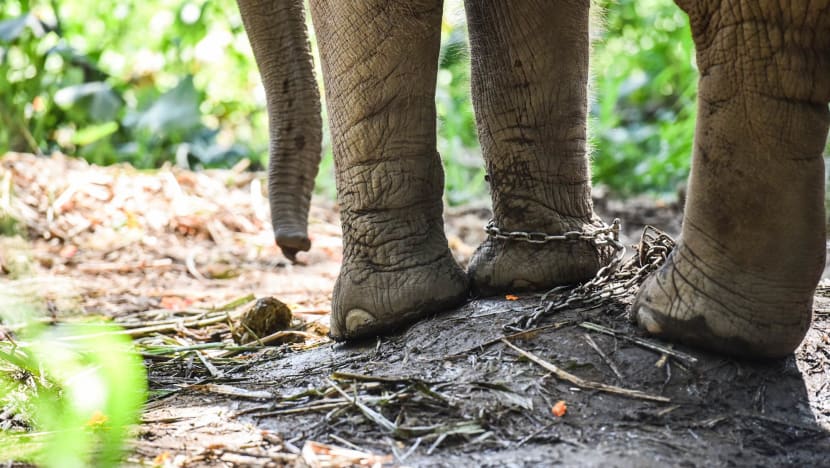
BEATEN, HOOKED, KNIFED - EVERYTHING
“Elephants are born from the wild and their instinct is as a wild animal,'' explained Sangdeaun “Lek” Chailert, the founder of Elephant Nature Park and one of Thailand’s most prominent voices for the welfare of animals in the country.
“There is no way they walk out from the mother and start painting for people. They won’t just come out and stand on their own head. They don’t stand up on two legs.” Every single elephant performing or being ridden in Thailand has endured “training and cruelty'', she said.
It is no secret that in communities like Ban Ta Klang and others, away from the eyes of visiting tourists and government officials, painful rites are being performed on young elephants.
"We look for an auspicious time to teach it pain. We call this ritual Pasa, where we wound it to teach it pain, wound it to introduce the hook,” said Somphong ‘Kiew’ Salangam, an experienced elephant trainer - or mahout - in Surin of more than 20 years.

“They have to know what pain is because they’re big animals. If they don’t know what pain is, we can’t control them.”
Hern Jongjaingam handled a sharp bullhook as he explained how elephants learn to respond to a mahout’s commands out of fear of hurt. “We keep training elephants like teaching students to read,” he said.
“They often bleed. If there’s no blood, how can it be afraid?”
In northern Thailand, the ritual of pajaan, meaning to break apart, is even more unyielding and notorious. At the age of two, baby elephants will be separated from their mothers, the first step in a series of spirit-crushing exercises to control the animal for the rest of its life.
“The Pajaan ritual has existed for a long time. Since Karen people started catching elephants, the animals have all been through Pajaan,” said Sadudee ‘Sam’ Sericheevee, an ethnic Karen whose family has a long history with elephants in Mae Wang district, close to Chiang Mai.
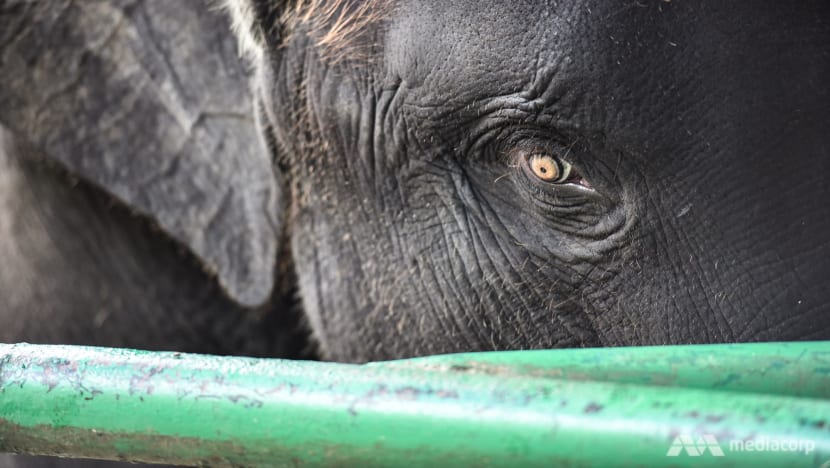
“In Pajaan, a small cage made from wood is placed on the ground. People would bring an elephant into the cage, tie its legs and neck to stop it from moving and start training it by beating the animal. They would hit it with a hook and a knife on its head to tame it.
“The training is very hard. Some elephants aren’t strong enough and drop dead,” he said.
“The elephant would scream day and night, beaten, hooked, knifed – everything. Karen people treat the wounds with herbal medicine but the scars never leave.”
Pajaan is illegal in Thailand. The ritual has been forced to be deeply clandestine and even activist networks are reluctant to share information about where and how it occurs. But Sam says he knows it still happens in secret, mostly along the Thai-Myanmar border, areas he visits every year. The tourism industry demands it.
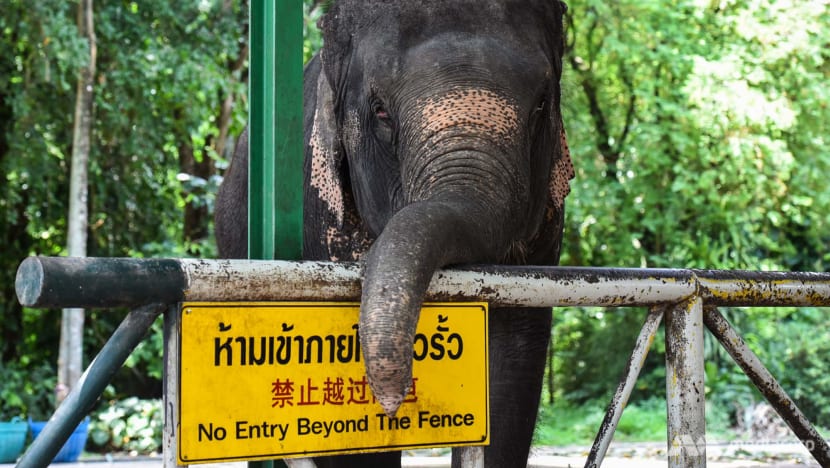
ELEPHANTS IN THE BACKYARD
Sam’s community has generated income from elephants for generations. For the last couple of decades or so, they have actively trained elephants to be rented to riding camps around Chiang Mai. It has been entrenched in the village and its people - the relationship a fraught one defined by inflicted domination.
Activists like Edwin Weik, an elephant rescuer, believe these local elephant factories hold no special place in Thai culture. He does not accept entrenched cultural value as an excuse for the mistreatment of animals.
“By culture, they feel they’re allowed to keep elephants the way they have been for the past 100 years. I think that’s the wrong approach by these groups,” he said.
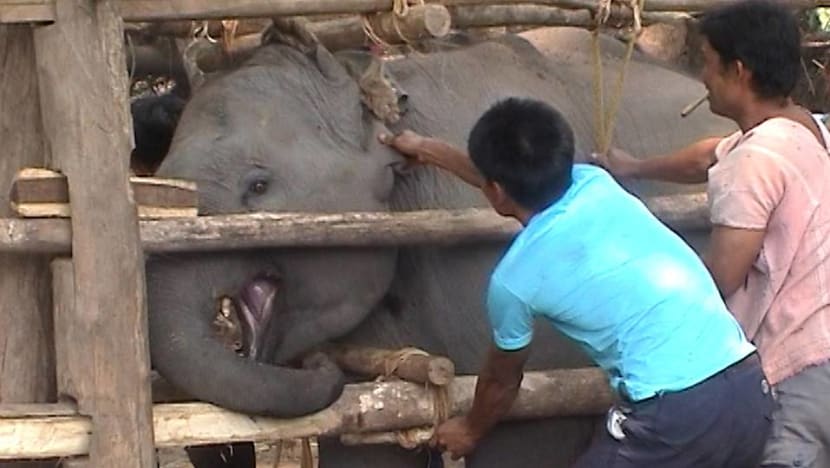
“I take it with a huge grain of salt when people say keeping elephants and breeding them in captivity is part of our culture. Absolute nonsense. Some people opportunistically jumped into tourism. People didn’t keep them in their backyard as they do now.”
But these Karen villagers, once the wielders of steel and inflictors of suffering, have now turned away from their past behaviour. Sam’s family now runs the Karen Elephant Experience, a tourism project where the animals roam free and bathe and play in natural ponds.
Their elephants have been brought home again.
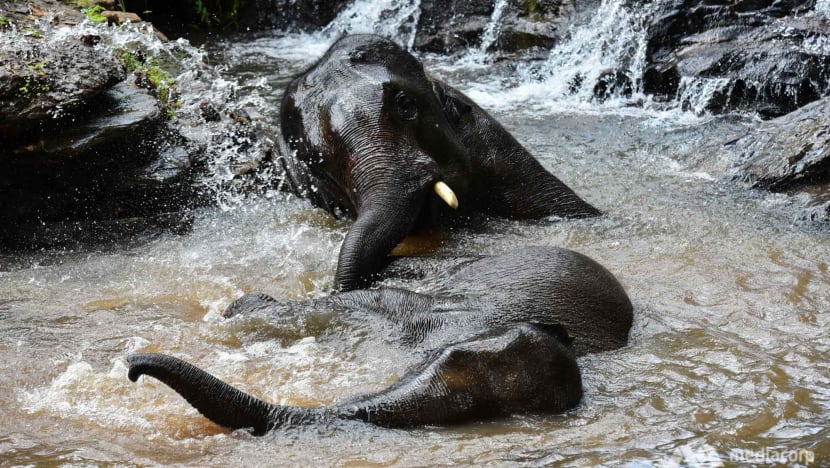
The 32-year-old ethnic Karen is reflective about the contrasts in their old lives and the new.
“When it comes to elephant shows, what tourists see is beautiful but they have no idea how hard the training is behind the scenes, where elephants may get beaten, hurt, stabbed with knives – many things. In elephant shows, tourists clap and smile when they see elephants paint pictures and all, thinking they’re gifted. Behind the scenes, it’s very cruel,” he said.
“Now that they’re here, their health is good, the atmosphere is good, their wellbeing is good. Every day I spend time with them, I notice that they’ve become bigger and better. They are healthy.”
It is part of a trend towards a focus on greater animal welfare on behalf of camp owners concerned about the health of their elephant and the perceptions of their operations.

Chiang Mai-based elephant veterinarian Kajornphat Boonprasert says he has witnessed the changing attitudes as he performs health and welfare checks on elephants throughout northern Thailand.
“In the past, elephants were cheap and there were a lot of them. Elephant owners have come to realise that exploitation leads to health problems and when that happens, the elephants have to stop working, which causes a loss in income,” he said.
He is also an advocate for elephant training and chaining. This puts him at odds with other leading voices in the sector. “It’s very necessary,” he said. “Baby elephants are like children but they are huge and they want to play with people, running to people. It’s very dangerous if they don’t know commands or how to live with humans.”
It is a sentiment that the government department charged with ensuring animal welfare standards agrees with. “We have to admit there are two sides of the story. If we don’t force or control the animals sometimes, it can be risky for people around them,” said Somchuan Ratanamungklanon, deputy director-general of the Department of Livestock.
“So, controlling the animals or making them safe for people is one of the ways to take care of them. But then again, they shouldn’t be chained so much their legs are wounded, for instance.”
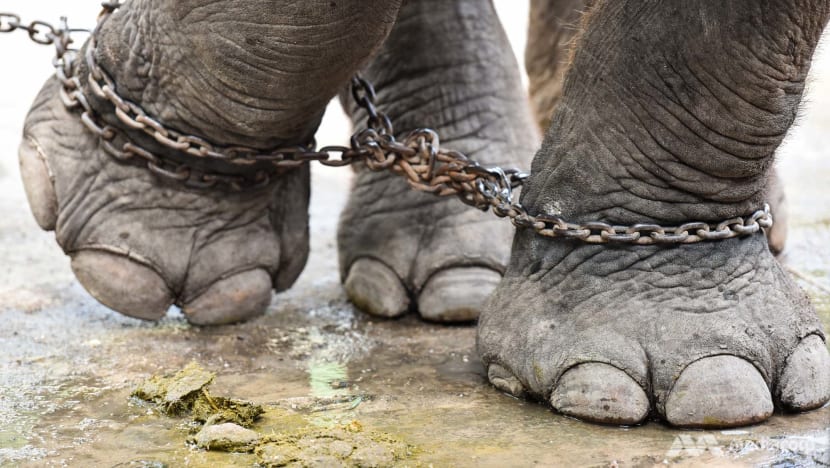
'WHY DO YOU THINK THIS IS RIGHT?'
Despite widespread criticism of elephant shows and the growing demand for tourism projects that do not involve cruel exploitation, the Thai government is making a huge investment in Ban Ta Klang.
It will not come in the form of a sanctuary, seen by many as a sustainable practice that could shape the tourism landscape in a positive way. Instead, ‘Elephant World’, with an expected build cost of about US$15 million, is being promoted as the world’s biggest “elephant conservation centre” but will feature animals performing in a circus-like environment.
READ: A young elephant's journey to salvation
The hundreds of elephants painting, balancing, dancing and playing for tourists already in Ban Ta Klang are primed to be Elephant World’s star attractions.
Today, it is still a construction site, but a tour inside shows the scale of the future complex, which will be 80 hectares when completed. “They want it to be a world famous show,” said Lek Chailert.
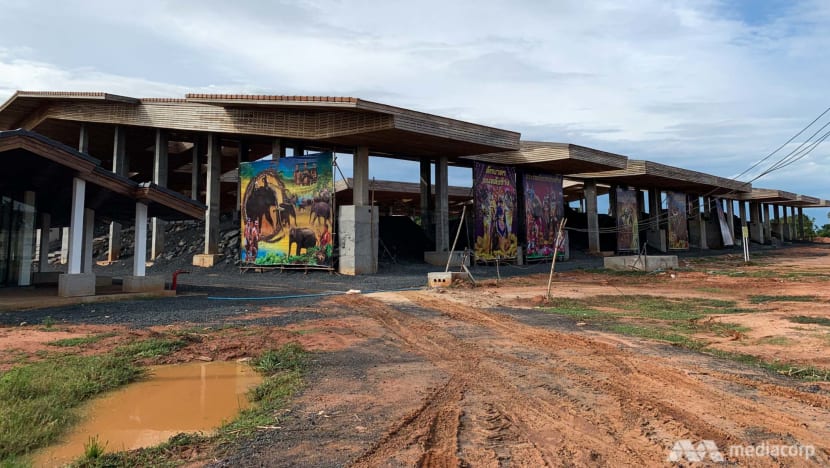
Lek, who runs Elephant Nature Park, a rescue sanctuary that currently is home to 85 elephants - many of them elderly, disabled, abandoned and malnourished - is afraid organisations like hers will need to continue to pick up the pieces.
“When I start to go and speak to these people, they think I’m crazy. I speak against the cruelty and they think I’m the one who tries to destroy their tradition,” she said.
“I ask, if I took your baby and put it in the zoo, or if I took your baby and chained it, would you agree with that?
“The tourists have to go and think twice, is this right or not? Why do you think this is right, that we entertain ourselves when animals are suffering?”
















